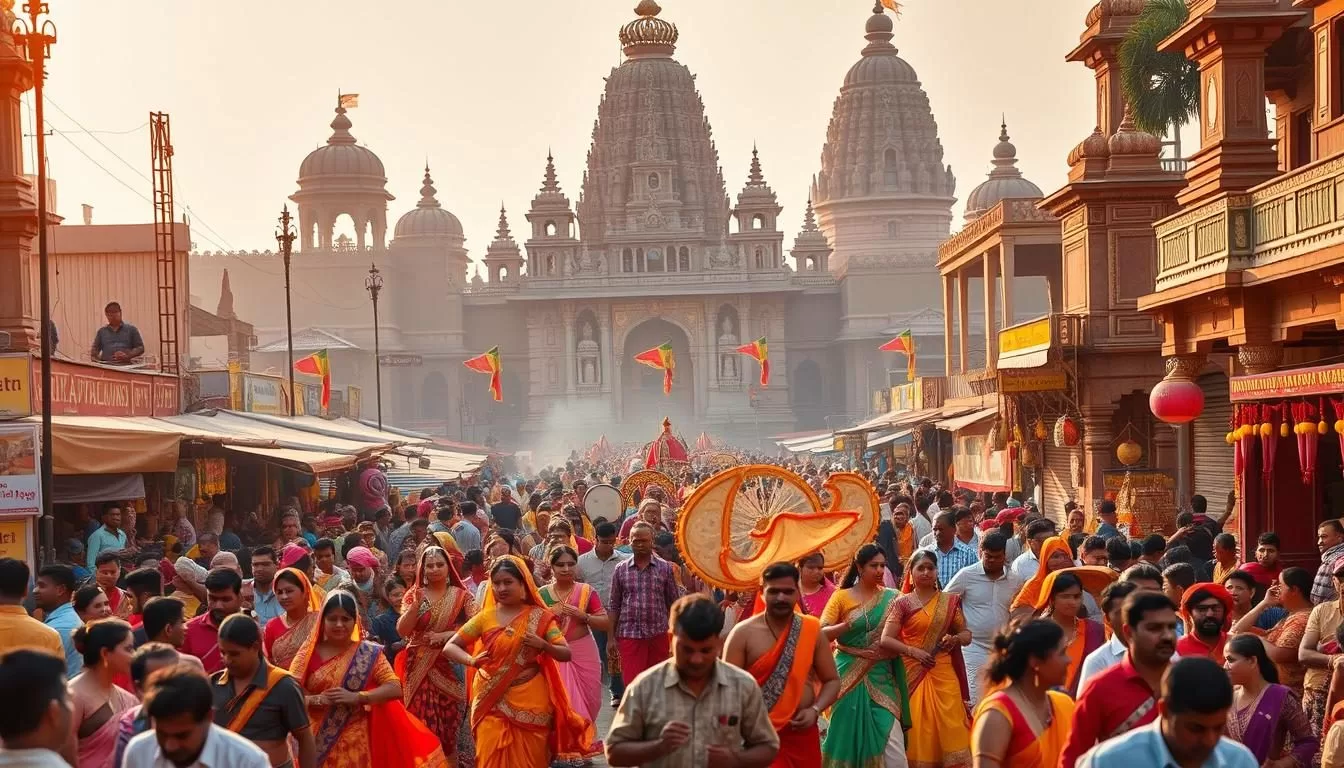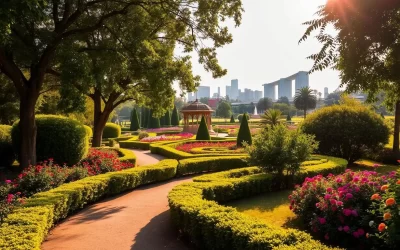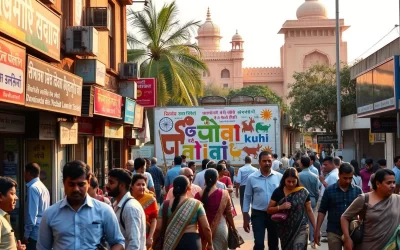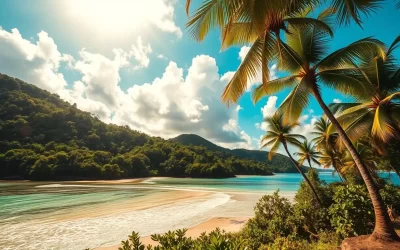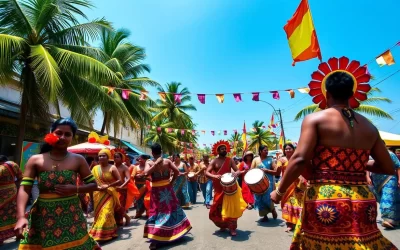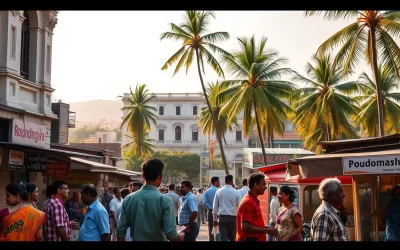Experience the vibrant culture and rich traditions of a country that comes alive with exuberant celebrations throughout the year. When you visit, you’ll discover why this nation is renowned worldwide for its diverse and vibrant festival celebrations.
Timing your trip to coincide with a few festivals can be a transformative way to immerse yourself in the local culture. You’ll gain unique insights into the country’s traditions, beliefs, and way of life, creating unforgettable memories and deeper connections with local communities.
From religious observances to harvest celebrations and cultural events, the variety of festivals is staggering, reflecting the incredible diversity of the region.
Understanding the Cultural Significance of Indian Festivals
Festivals in India are a kaleidoscope of colors, music, and dance, reflecting the country’s diverse heritage. As you immerse yourself in these vibrant celebrations, you’ll discover that each festival has its unique significance and rituals, offering a diverse range of experiences.
Indian festivals are much more than just celebrations; they’re living expressions of the country’s rich cultural heritage, religious traditions, and historical narratives. These festivals serve as important markers in the Indian calendar, often tied to agricultural cycles, celestial events, or significant religious and historical moments.
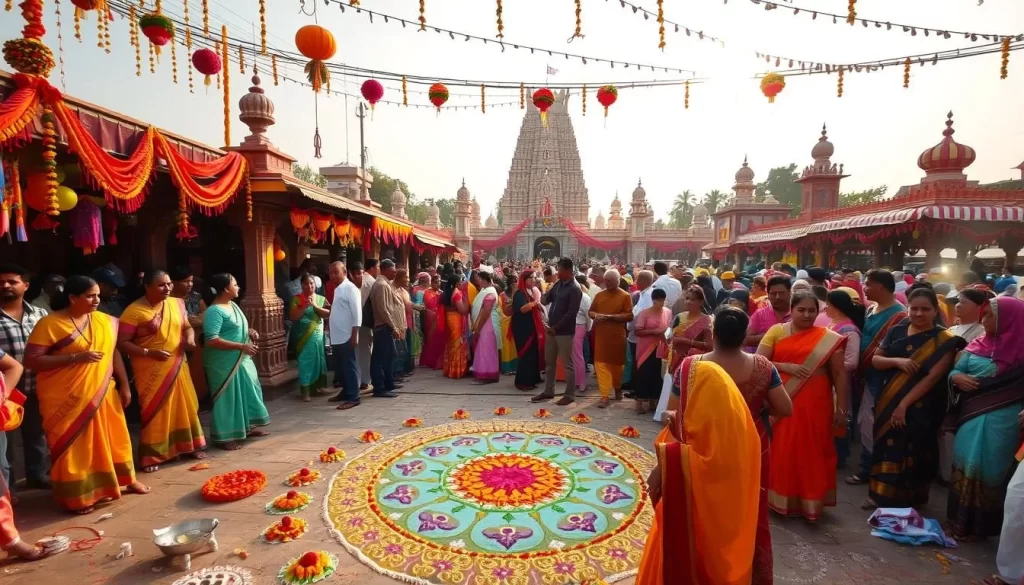
As you participate in these celebrations, you’ll notice how they create a sense of community and belonging among the people, bringing them together across social divides and strengthening cultural identity. The way these festivals blend religious devotion with social celebration creates experiences that are both spiritually meaningful and joyfully festive.
Moreover, Indian festivals often symbolize the triumph of good over evil, light over darkness, or the celebration of new beginnings, reflecting the country’s philosophy of life and values. By participating in these celebrations throughout the year, you’ll gain a deeper understanding of India’s cultural roots and the rhythm of life in this diverse place.
What to Expect When Attending Indian Festivals
As you step into the vibrant world of Indian festivals, you’ll be greeted by a kaleidoscope of colors, sounds, and experiences that will leave you spellbound. Every festival brings a unique fervour and excitement, whether it’s the spirited dances of Garba during Navratri or the awe-inspiring display of fireworks during Diwali.
You can witness the devotion of the worshippers during religious processions, be captivated by the elaborate decorations and artistic expressions, and feel the warmth of Indian hospitality as locals extend their greetings and offer traditional sweets and delicacies. The atmosphere is electric, with vibrant colors, intoxicating aromas, rhythmic music, and crowds of enthusiastic people creating an unforgettable experience.
- Experience a sensory explosion with vibrant colors and rhythmic music.
- Encounter different types of festival experiences, from intimate community celebrations to massive gatherings.
- Learn about appropriate festival etiquette, including how to respectfully participate in religious ceremonies.
- Discover how traditional Indian clothing can enhance your festival experience.
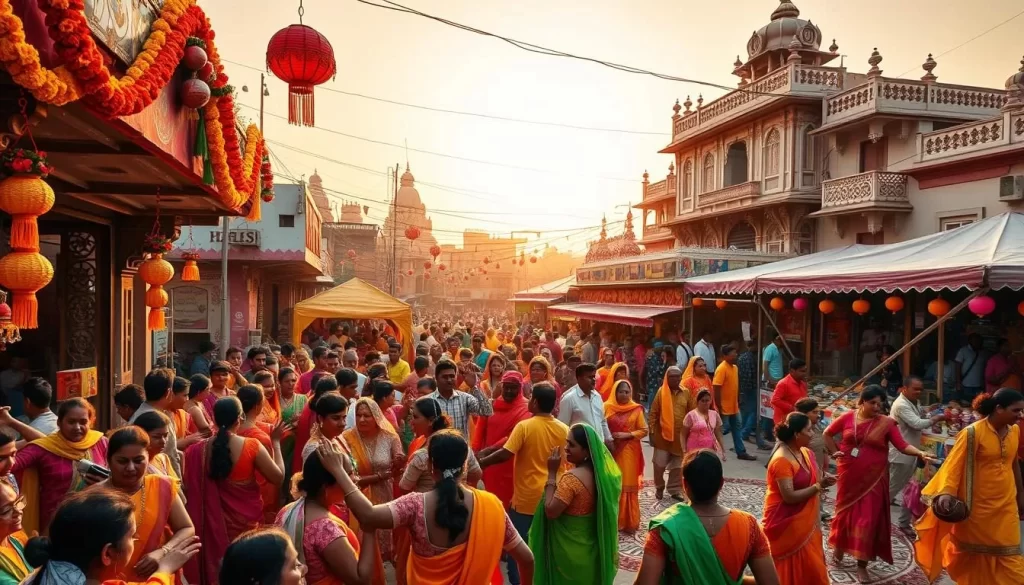
What to Wear at Indian Festivals
Embracing the vibrant and colourful clothing styles of India will not only make you feel a part of the festivities but also enhance your overall experience. Consider the climate and weather conditions while choosing your festival attire. Light and breathable fabrics like cotton or silk are ideal for hot summer celebration, while warmer fabrics like wool or silk blends are suitable for festival during colder months.
| Season | Recommended Fabric | Example Outfits |
|---|---|---|
| Summer | Light and breathable (cotton, silk) | Kurtas, sarees |
| Winter | Warmer fabrics (wool, silk blends) | Woolen kurtas, shawls |
| Monsoon | Water-resistant or quick-drying | Rain-friendly kurtas, salwar kameez |
Some festival involve water, colored powders, or other elements that might affect your clothing choices. Be prepared to get involved and have fun while respecting local customs.
India: Top Festivals to Check Out When Visiting by Season
The rhythm of India’s festivals follows the changing seasons, offering a unique experience throughout the year. As you explore the diverse cultural landscape of India, understanding the seasonal festivals can greatly enhance your travel experience.
Winter Festivals (December-February)
Winter in India is marked by a series of vibrant festivals that celebrate the harvest season and the gradual warming of the weather. Pongal, Lohri, and Makar Sankranti are some of the prominent winter festivals. Pongal, celebrated in Tamil Nadu, is a four-day harvest festival that honors the sun god. Lohri, observed in Punjab, is a bonfire festival that marks the beginning of the harvest season.
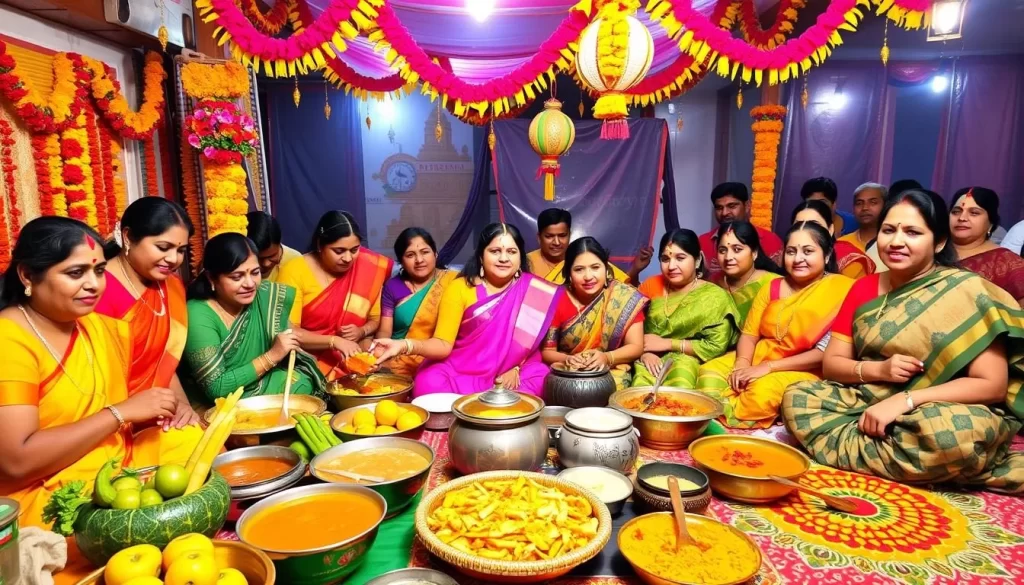
Spring Festivals (March-May)
Spring in India is a time of renewal and growth, celebrated through various festivals. The famous Holi festival of colors is a highlight of the season, where people come together to play with colored powders and waters, symbolizing the victory of good over evil. Regional New Year celebrations also take place during this time, marking the beginning of new life cycles.
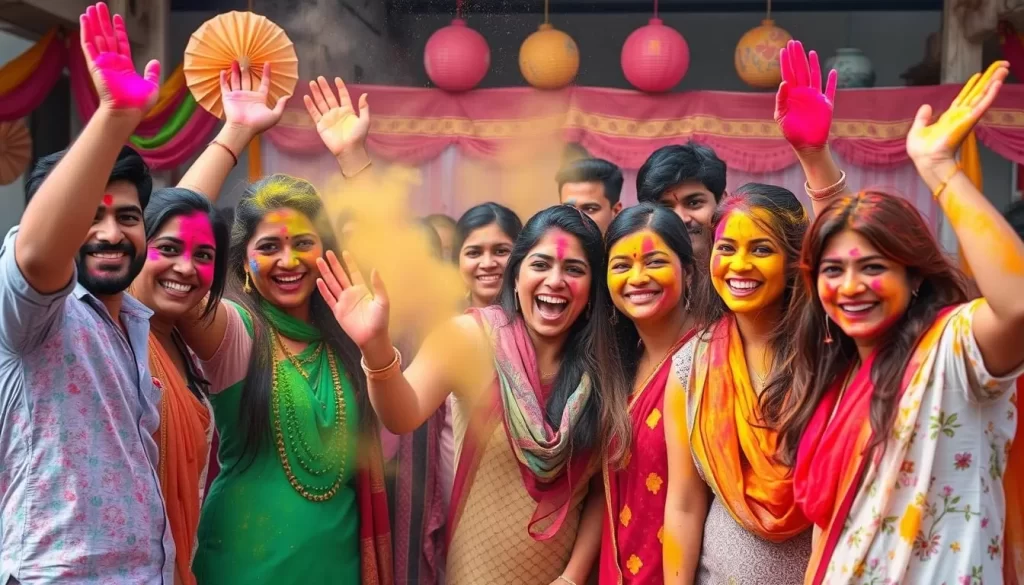
Monsoon and Autumn Festivals (June-November)
The monsoon and autumn seasons in India are characterized by festivals that coincide with the rainy season and harvest time. Onam, celebrated in Kerala, is a harvest festival that honors the mythical king Mahabali. Durga Puja in West Bengal and Diwali across the country are significant celebrations during this period, marking the triumph of good over evil and light over darkness.
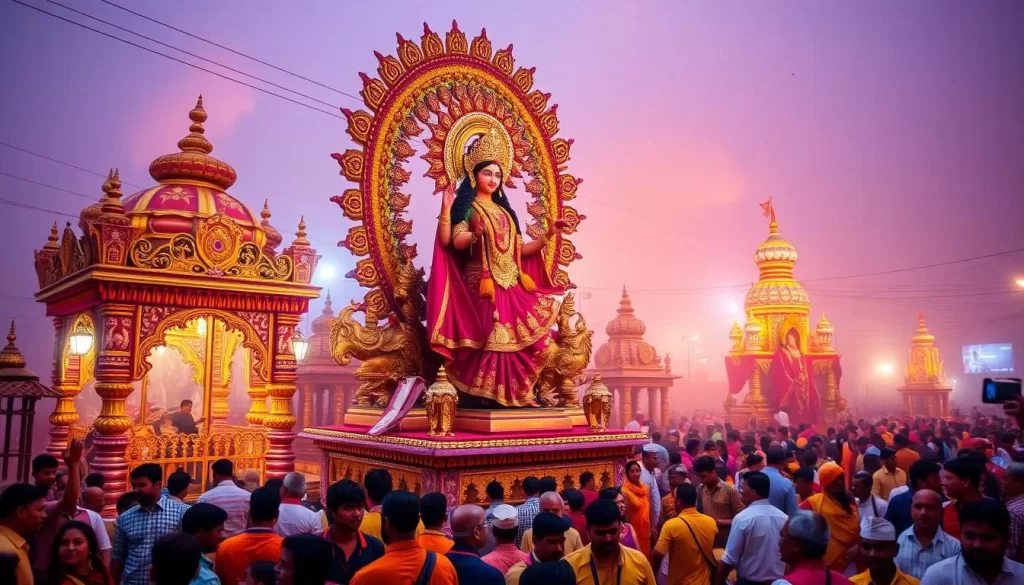
India’s festival calendar is deeply intertwined with its agricultural cycles, religious observances, and cultural traditions. The varying dates of these festivals, often based on the lunar calendar, mean that the celebrations can differ from year to year. Planning your visit around these festivals can provide a rich cultural immersion experience, with different regions offering unique insights into local customs and beliefs.
Religious Festivals That Showcase India’s Spiritual Heritage
India’s religious festivals are a testament to the country’s profound spiritual roots and cultural richness. With multiple faiths coexisting, India celebrates a diverse array of festivals throughout the year, each with its unique legends, rituals, and culinary traditions.
Hindu Festivals
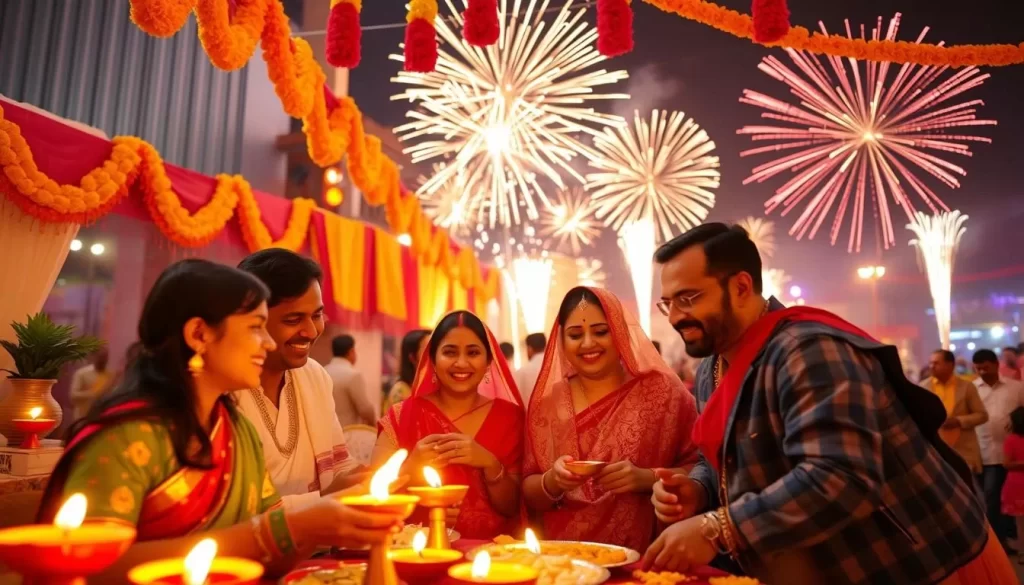
Hindu festivals are an integral part of India’s spiritual heritage. Durga Puja, for instance, is a significant festival in West Bengal and other parts of East India, celebrating the goddess Durga’s victory over the buffalo demon Mahishasura. This festival symbolizes the triumph of good over evil and is marked by elaborate decorations, cultural performances, and the immersion of idols in rivers or lakes.
Other major Hindu festivals include Diwali, the festival of lights, and Navratri, a nine-night celebration honoring different aspects of the divine feminine. These festivals often incorporate elaborate temple rituals, processions, and community worship, creating an immersive experience for participants and observers alike.
Muslim, Sikh, Buddhist, and Other Religious Celebrations
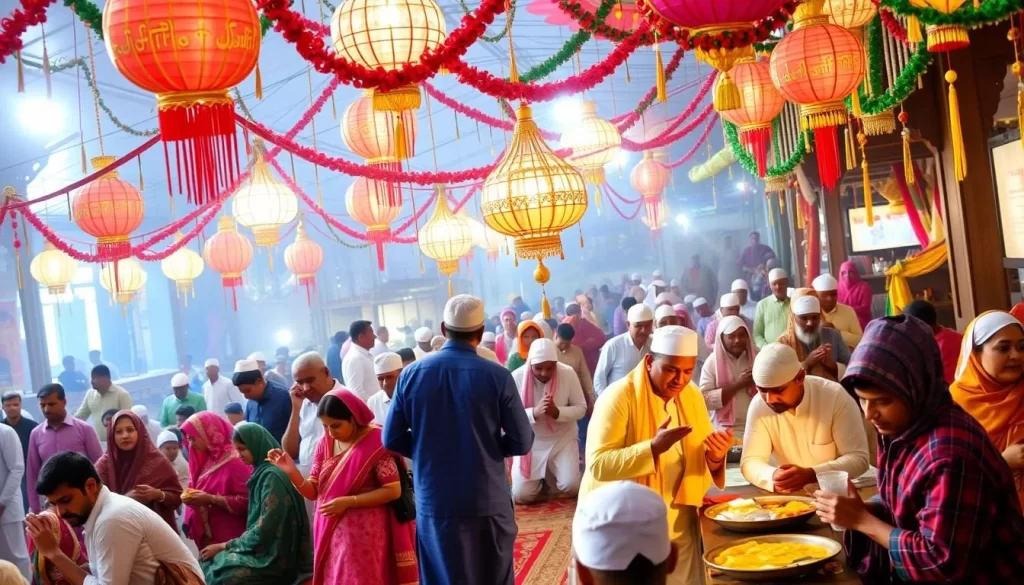
India’s religious diversity is also reflected in the festivals of other faiths. Eid celebrations are significant in Muslim communities, while Guru Nanak Jayanti is a major festival for Sikhs, commemorating the birth of Guru Nanak, the founder of Sikhism. Buddhists celebrate Buddha Purnima, marking the birth, enlightenment, and death of Buddha.
These festivals showcase the rich tapestry of India’s spiritual heritage, with each community contributing its unique traditions and customs. Visitors can respectfully participate in or observe these celebrations, gaining a deeper understanding of India’s cultural fabric.
By experiencing India’s religious festivals, you’ll gain insight into the country’s profound spiritual roots and the significance of these celebrations in the daily lives of its people. Whether you’re observing a Hindu festival like Diwali or a Muslim celebration like Eid, you’ll witness the vibrant cultural diversity that defines India.
Regional Festivals That Highlight India’s Cultural Diversity
As you travel across India, you’ll discover a rich variety of regional festivals that highlight the country’s cultural diversity. These festivals are a reflection of the local history, traditions, and cultural practices that make each region unique.
North Indian Festivals
North India is known for its vibrant festivals like Holi and Baisakhi, which feature energetic folk dances and community celebrations. These festivals showcase the region’s exuberant culture and are a great way to experience the local traditions.
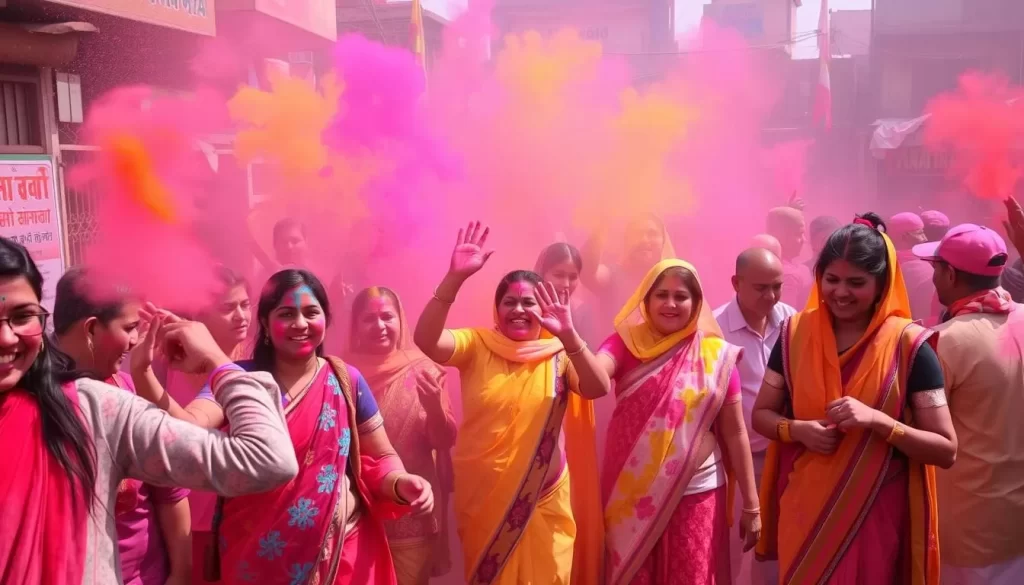
South Indian Festivals
South Indian festivals like Pongal and Onam are centered around harvest celebrations and feature elaborate temple rituals and spectacular boat races. These festivals highlight the region’s agricultural heritage and artistic traditions.
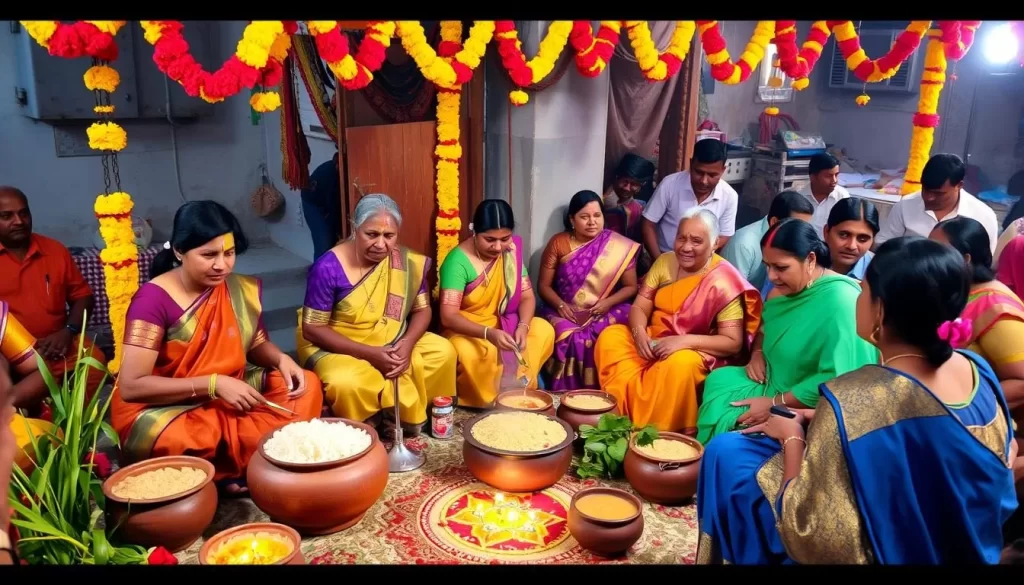
East and West Indian Festivals
The eastern and western regions of India have their own unique festivals. In West Bengal, Durga Puja is celebrated with artistic pandals and cultural performances. Western India, particularly Gujarat, celebrates Navratri with famous Garba dances. These festivals showcase the region’s creative expression and cultural heritage.
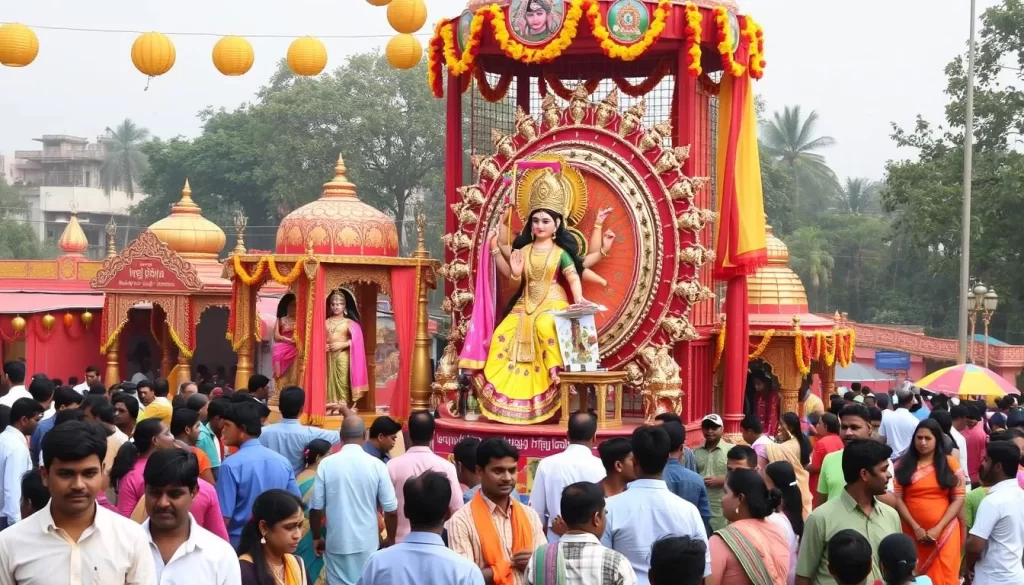
These regional festivals not only showcase India’s cultural diversity but also help preserve local languages, artistic traditions, and cultural practices. By visiting different regions during their signature festivals, you’ll gain insight into the unique character of each area and experience the country’s incredible cultural richness.
Must-Experience Festivals for First-Time Visitors to India
If you’re visiting India for the first time, make sure to coincide your trip with one of its iconic festivals. India’s festivals are a vibrant representation of its rich cultural heritage, offering a unique experience that combines spirituality, art, and community celebrations.
Diwali: The Festival of Lights
Diwali, the Festival of Lights, is celebrated with immense enthusiasm throughout India, signifying the triumph of light over darkness and good over evil. The festivities include lighting oil lamps, bursting fireworks, exchanging gifts, and enjoying traditional sweets and delicacies. To experience Diwali in India, visit major cities like Delhi, Mumbai, or Varanasi, where the streets and temples are illuminated with millions of oil lamps, creating a magical atmosphere.
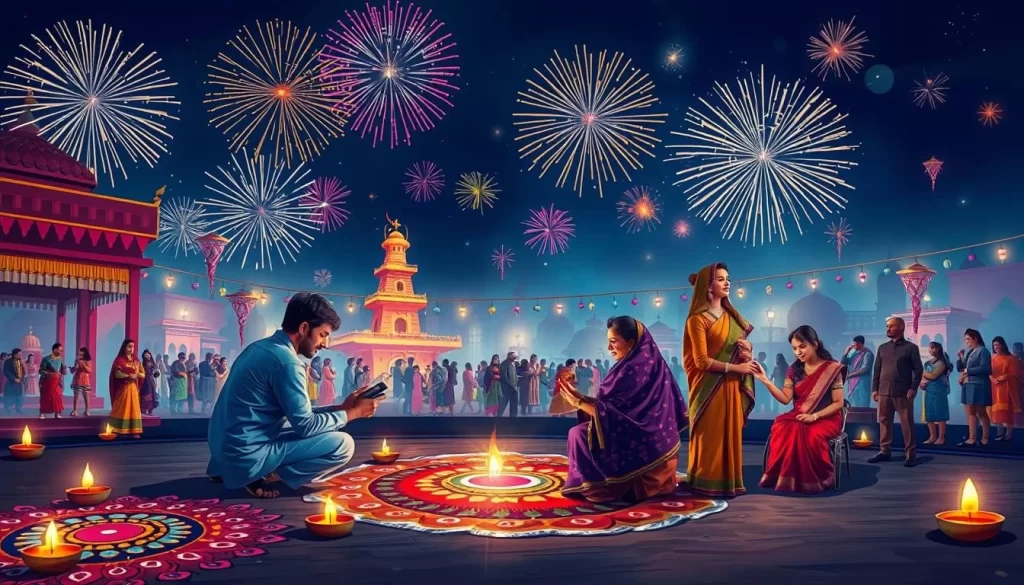
Holi: The Festival of Colors
Holi, the famous Festival of Colors, is a joyous celebration where people throw colored powders and water at each other, breaking down social barriers and welcoming spring. For the best Holi experience, head to places like Mathura, Vrindavan, or Jaipur, known for their vibrant Holi celebrations.
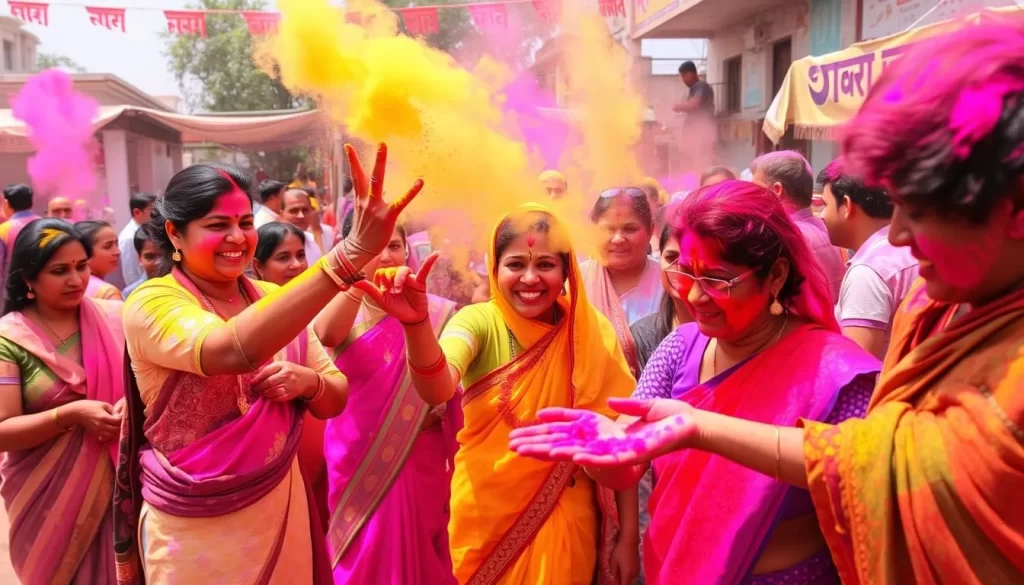
Pushkar Camel Fair
The Pushkar Camel Fair, held in the holy town of Pushkar in Rajasthan, is a mesmerizing spectacle that attracts both locals and tourists. It’s the largest camel fair in the world, featuring camel races, livestock trading, colorful folk performances, and the famous Pushkar Lake pilgrimage. For visitor information, plan your trip in November, and be prepared for a vibrant cultural showcase.
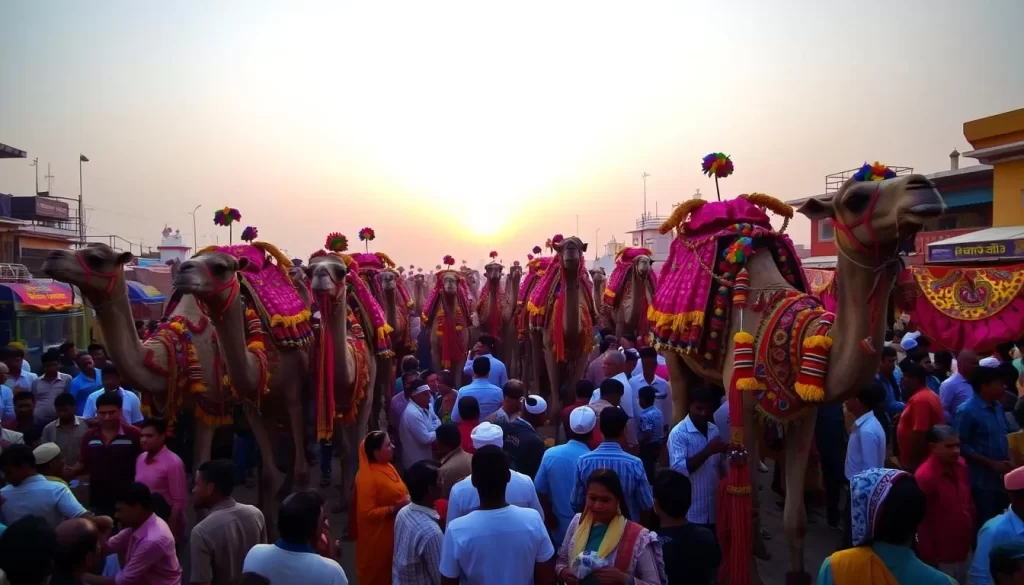
Durga Puja in Kolkata
Durga Puja is the most significant festival in West Bengal and other parts of East India, involving elaborate decorations, artistic idols of the goddess, cultural performances, and the immersion of the idols in rivers or lakes. Experience the artistic grandeur of Durga Puja in Kolkata, where temporary structures house stunning sculptures of Goddess Durga, symbolizing the victory over the demon.
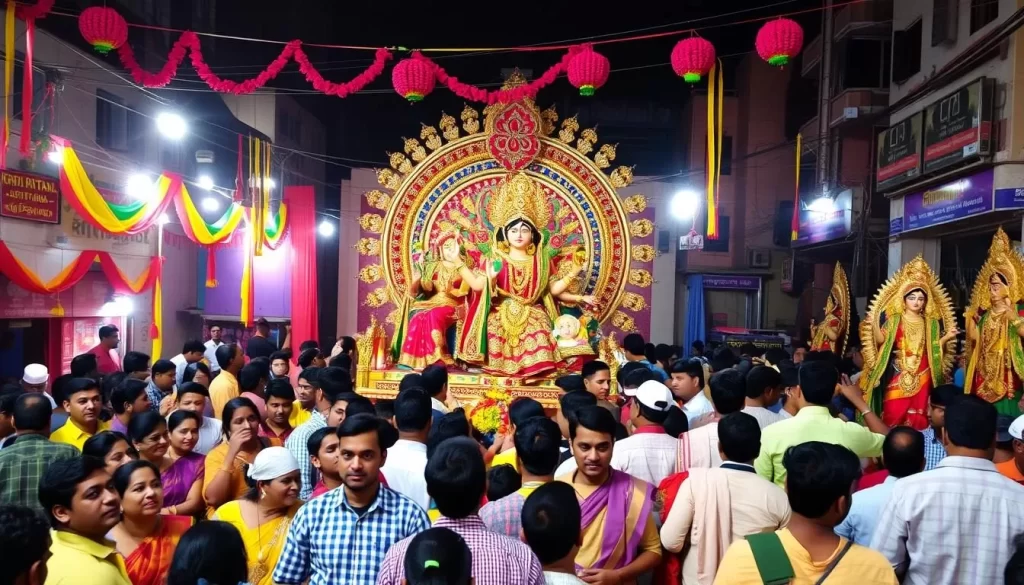
These festivals offer multiple dimensions of experience—from religious rituals to social celebrations, artistic expressions to culinary traditions. They transform public spaces, with streets, neighborhoods, and entire cities taking on festive appearances during these special times. As a first-time visitor, participating in these festivals will give you a deeper understanding of Indian culture and its rich heritage.
Tips for Planning Your Festival-Focused Trip to India
To make the most of your festival experience in India, careful planning is key. If you’re planning a trip around a festival, double-check the dates as they are usually available online and on tourism board websites.
While cities like Mumbai and Delhi put on quite the spectacle, they can be too chaotic. Instead, consider staying in a family-owned property in a town or village, where you can experience the festival in a more personal and authentic way.
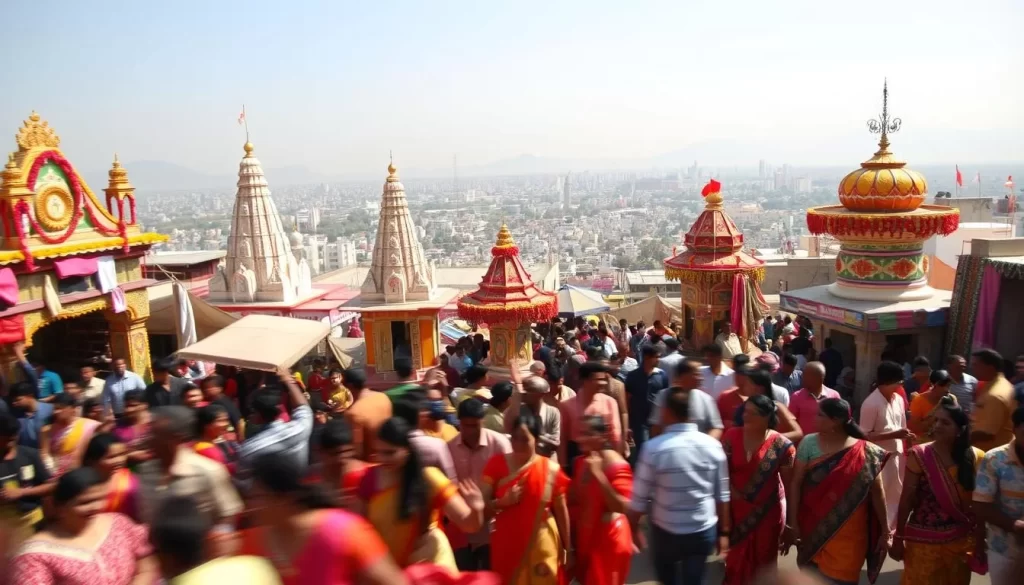
- Research festival dates well in advance, as many follow the lunar calendar and change dates each year.
- Choose between experiencing festivals in major cities versus smaller towns or villages, considering the different atmospheres.
- Consider alternatives to the most crowded festival locations to find authentic celebrations that are less overwhelming.
- Book your accommodations and transportation well in advance, as prices rise and availability becomes limited during major festival periods.
- Pack essentials for different types of festivals, whether they involve water, colored powders, outdoor ceremonies, or nighttime celebrations with lamps and fireworks.
- Learn how to respectfully participate in festival activities, from religious ceremonies to community celebrations, boat races, and street processions.
By following these tips, you can create a memorable cultural journey and enjoy the vibrant festivities that India has to offer. Whether you’re watching fireworks, participating in a boat race, or simply soaking in the atmosphere, your festival-focused trip to India is sure to be an unforgettable experience.
Conclusion
India’s diverse festivals provide a fascinating insight into the country’s cultural tapestry. As you explore these celebrations, you’ll discover the rich heritage and traditions that make India unique.
From the colorful festivals of North India to the elaborate rituals of West Bengal, and from the boat races of Kerala to the Pushkar Camel Fair, each festival offers a unique experience. You’ll witness how these celebrations connect people across social boundaries and generations, creating communities united by shared traditions, dances, and singing.
By participating in these festivals, you’ll experience India with all your senses—through music, dance, fireworks, water, and delicious festival foods. We encourage you to include at least one festival in your travel plans, creating memories and connections that last long after you’ve returned home.
